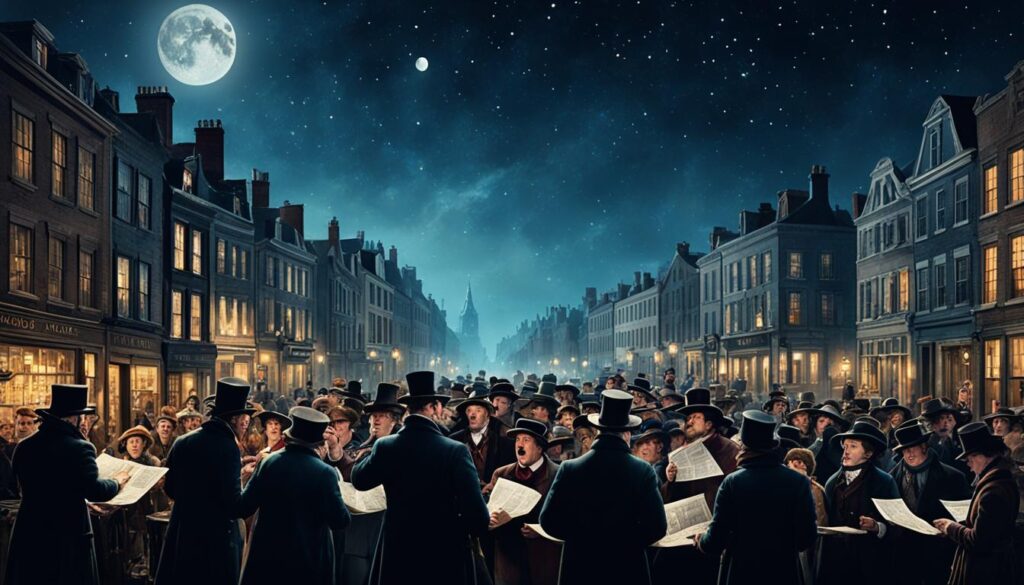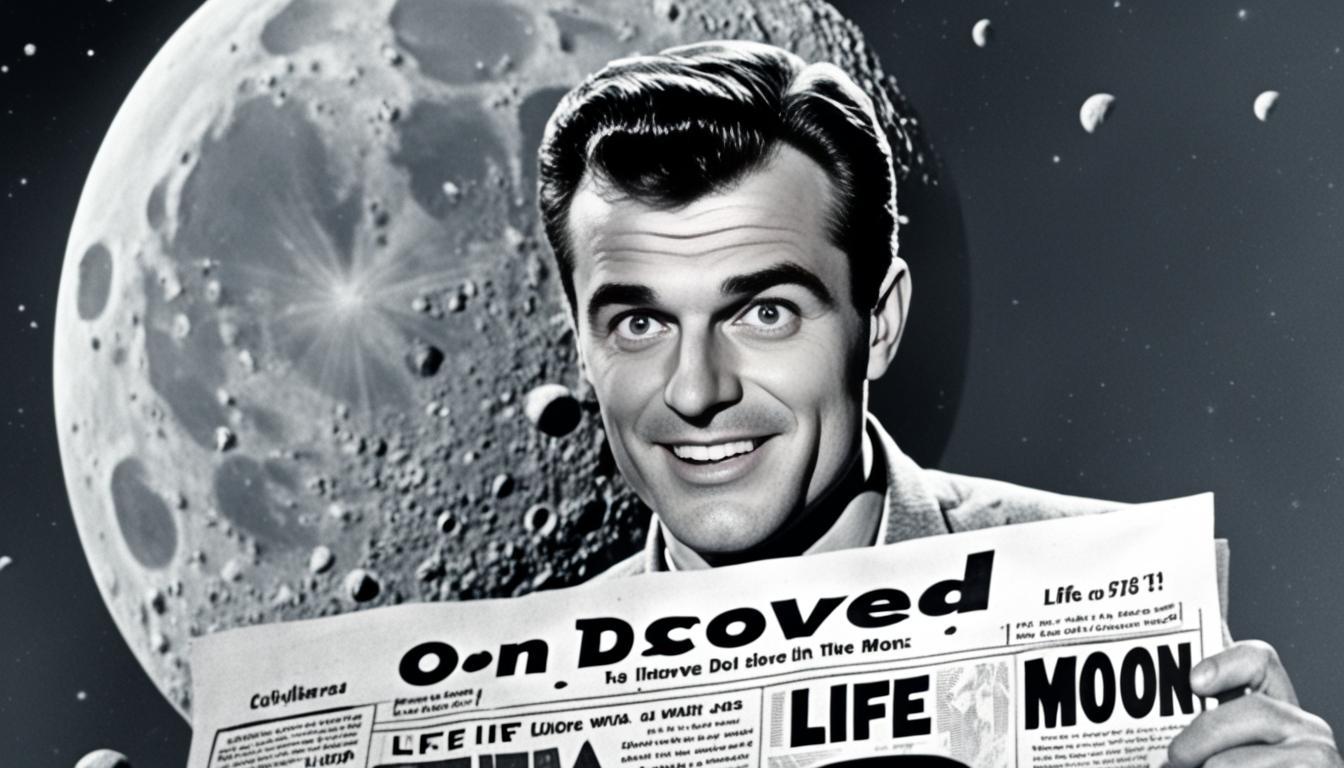In a sensational feat of journalism, the New York Sun newspaper published a series of six articles in August 1835 that would become known as “The Great Moon Hoax.” The articles claimed that renowned astronomer Sir John Herschel had discovered evidence of life on the moon, including fantastical creatures like unicorns, two-legged beavers, and furry, bat-like humanoids.
Attributed to the fictional Dr. Andrew Grant, a supposed colleague of Herschel, the story vividly described the moon’s geography, featuring massive craters, amethyst crystals, rivers, and lush vegetation. The articles were purportedly reprinted from the Edinburgh Journal of Science, lending an air of credibility to the extraordinary claims about lunar inhabitants.
The 1835 moon hoax articles ignited the public’s imagination and boosted the Sun’s circulation, demonstrating the power of sensational journalism. While eventually revealed as a hoax, the story left an indelible mark on the history of media and public fascination with extraterrestrial life.
Key Takeaways
- The New York Sun published a series of articles in 1835 claiming the discovery of life on the moon
- The articles, known as “The Great Moon Hoax,” described fantastical lunar inhabitants and geography
- The story was attributed to Sir John Herschel and the fictional Dr. Andrew Grant
- The hoax articles were a sensational journalism feat that boosted the Sun’s circulation
- The 1835 moon hoax left a lasting impact on media history and public fascination with extraterrestrial life
The Great Moon Hoax of 1835
The Great Moon Hoax of 1835 was a series of articles published in the New York Sun, a penny press newspaper founded in 1833. The articles, believed to be written by journalist Richard Adams Locke, claimed that the renowned astronomer Sir John Herschel had discovered evidence of extraterrestrial life on the moon using a powerful new telescope.
Locke, educated at Cambridge University, crafted the hoax as a clever satire, poking fun at earlier speculations about life on the moon. In particular, the articles targeted the claims of Reverend Thomas Dick, who had asserted in his popular books that the moon was home to a staggering 4.2 billion inhabitants.
The New York Sun, as part of the emerging penny press, aimed to capture a wider readership by offering a more affordable price and engaging, narrative-driven journalism. Richard Adams Locke leveraged this platform to present the hoax as groundbreaking scientific discoveries made by the esteemed Sir John Herschel, lending an air of credibility to the fantastical tales of extraterrestrial life.
The articles played upon popular beliefs and fascination with the possibility of life beyond Earth. By presenting the findings as the work of a respected astronomer, Locke’s satire blurred the lines between fact and fiction, captivating readers and sparking intense public interest in the idea of extraterrestrial life on the moon, while simultaneously mocking the grandiose claims made by figures like Thomas Dick.
Impact and Reactions to the 1835 Moon Life Hoax

The Great Moon Hoax of 1835 had a significant impact, fooling many readers and leading to a substantial circulation increase for The Sun newspaper. The story’s popularity brought the paper international fame. Even a committee of Yale University scientists traveled to New York, hoping to find the Edinburgh Journal articles cited in the hoax.
Not everyone was convinced by the tale, however. Famed writer Edgar Allan Poe claimed the story was a plagiarism of his earlier work, “The Unparalleled Adventure of One Hans Pfaall.” In response to the Moon Hoax, Poe later published his own satirical piece called “The Balloon-Hoax.”
As for Sir John Herschel, the astronomer initially found the hoax amusing. However, he soon grew annoyed as he had to repeatedly answer questions from people who believed the story was serious. Herschel’s response to the situation was one of exasperation, as he worked to dispel the misconceptions the hoax had created.
The Great Moon Hoax of 1835 stands as a testament to the power of sensationalized media and the public’s willingness to believe in extraordinary tales. While it led to short-term success for The Sun, it also sparked debates about journalistic integrity and the responsibility of the press to provide accurate information to its readers.
The Legacy of the Great Moon Hoax
The Great Moon Hoax of 1835 reflected an era when sensationalist journalism in the penny press catered as much to readers’ desire for entertainment as for information. This would later evolve with the development of more ethical reporting standards. The hoax has been featured in various works, including the Pulitzer Prize-winning book “Gotham: A History of New York City to 1898” by Edwin G. Burrows and Mike Wallace, and the 2012 novel “The Map of the Sky” by Félix J. Palma.
The legacy of the moon hoax can be seen in later instances of media falsehoods, such as the 1938 radio dramatization of H.G. Wells’s “The War of the Worlds.” Some newspapers inaccurately reported widespread panic among listeners who believed the broadcast to be a real alien invasion. Even in recent times, the issue of fake news and media misinformation persists. In 2017, “fake news” was named the Word of the Year by two major word authorities, underscoring the ongoing challenge posed by misleading media content.
The Great Moon Hoax serves as a reminder of the power and potential pitfalls of media, and the importance of critical thinking and fact-checking in consuming news. While it may have been a playful prank, it also foreshadowed the serious consequences that can arise from the spread of misinformation and the blurring of lines between fact and fiction in journalism.

Leave a Reply